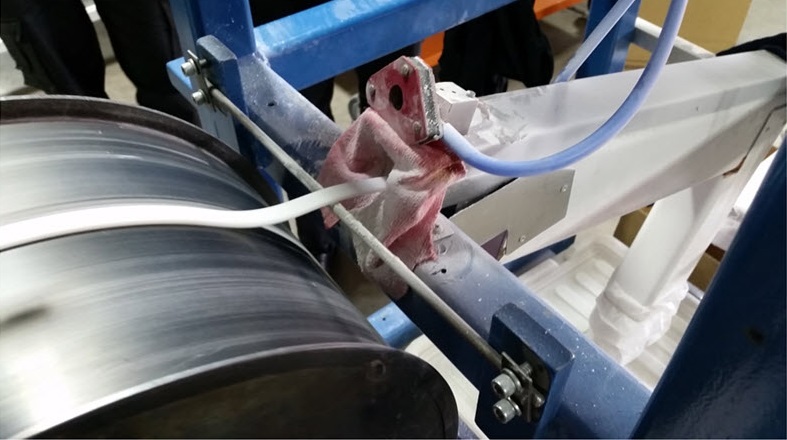
Talc and Silicone Extrusions
Jehbco manufactures custom silicone extrusions in our Sydney-based factory, carrying out all steps in-house, from product design and development to die cutting, material preparation and manufacture. This gives us fine grained control over the properties and quality of the final product, allowing us to tailor each product to the requirements of our varied customer base.
Jehbco’s manufacture of silicone extrusions is a process with several steps. The raw silicone material is first mixed and then fed to an extruder. The extrusion that comes from the extruder is passed through several stages of heating and then boxed or coiled. Finally, extrusions are placed in an oven for several hours to post-cure. The post-cure process reduces the stickiness of silicone, as well as removing volatiles and improving other properties.
In its raw form, silicone is quite sticky. While some applications require a high degree of stick and friction, such as gaskets which must be retained in joints without additional adhesive, many applications require lower friction than silicone naturally has. For example, o-rings must slide easily against machine parts and some seals must slide easily into a joint.
A problem with silicone’s natural stickiness is the tendency of some silicones to self-adhere when coiled. The coils of silicone extrusion may stick to each other, which can lead to tearing of thin sections during uncoiling. As extrusions are coiled prior to post-curing, the post-curing process does not solve the issue of self-adherence.
To reduce the stickiness of our extrusions, both for low friction applications and to eliminate the risk of self-adherence, we use a talcing process. After curing and before coiling, a thin layer of talc is applied to the surface of the extrusion. This layer of talc acts as a lubricant and prevents the extrusions from self-adhering when coiled. The talc does not react with the silicone and has no effect on the material properties of the extrusion; it only serves to reduce surface friction.
While the talcing process has previously been done by hand, Jehbco are currently implementing an automated talc application process. This will allow quicker application of a more even and consistent layer of talc on our extrusions.

Figure 1: An extrusion passing through Jehbco’s new talc applicator
On the other side of the coin, some applications require higher friction than our standard extrusions can offer. Not a problem! Jehbco can increase the coefficient of friction of our silicone in a number of ways: specifying softer (lower durometer) silicone, different grades of silicone and removing the post-cure process.
Jehbco makes every effort to ensure our product fits your application, from profile design to material properties.
For help matching our products with your application, please review our website www.Jehbco.com.au and contact us with any questions.


